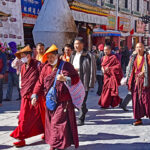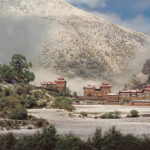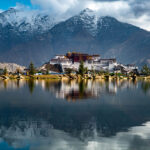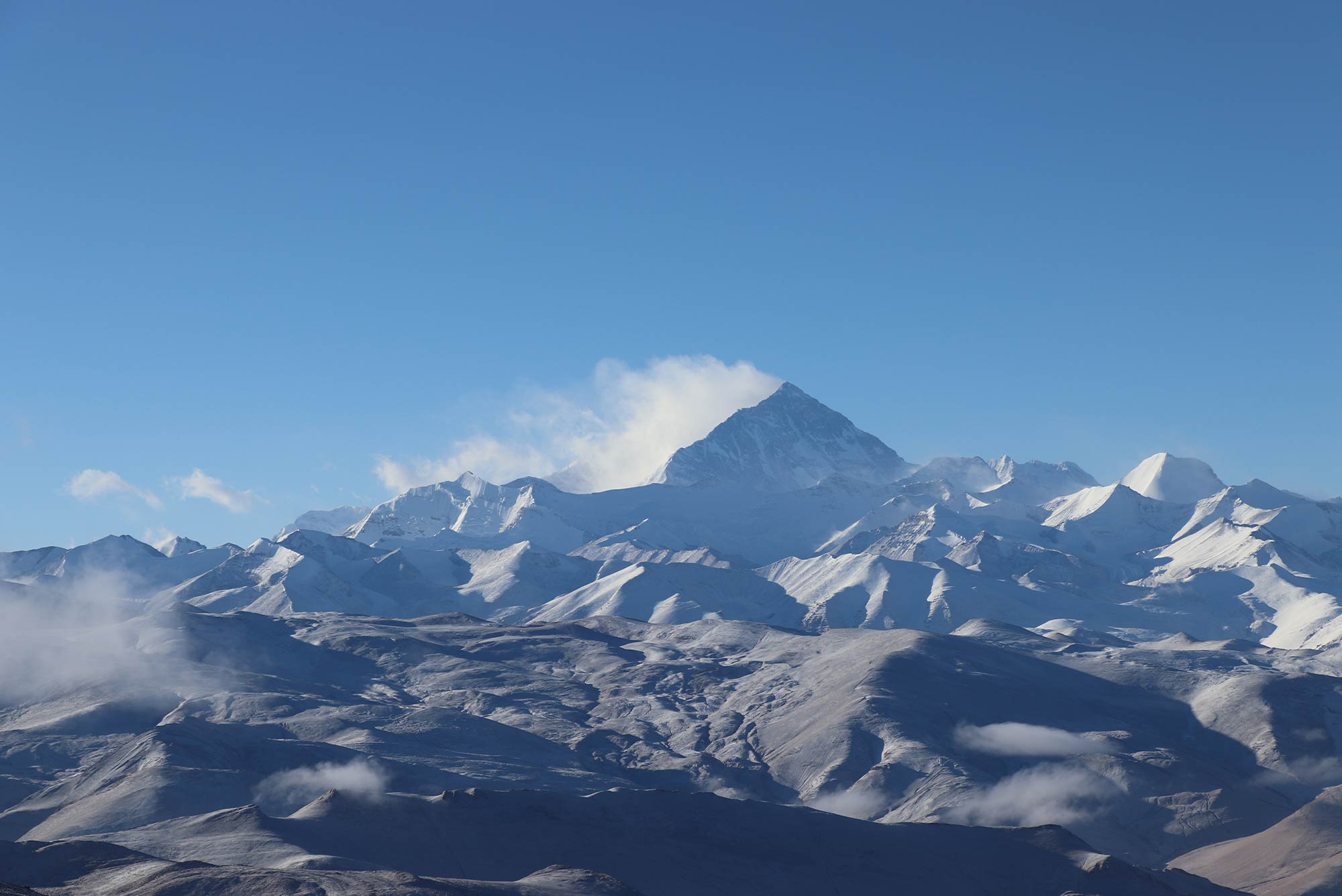Getting to Tibet. Tibet, often referred to as the “Roof of the World,” is a captivating destination known for its breathtaking landscapes, rich cultural heritage, and spiritual significance. If you’re planning a trip to this enchanting region, one of the first things you’ll need to consider is how to get there. In this article, we will explore the best ways to reach Tibet, taking into account various transportation options and providing you with essential information to make an informed decision.
Introduction
Before diving into the different modes of transportation, let’s have a brief overview of Tibet. Located in the heart of the Himalayas, Tibet is an autonomous region of China and offers a unique blend of Tibetan Buddhism, awe-inspiring mountains, pristine lakes, and ancient monasteries. To fully immerse yourself in the beauty and culture of Tibet, you need to plan your journey wisely.
Modes of Transportation to Tibet
When it comes to traveling to Tibet, there are primarily three modes of transportation: by air, by train, and by road. Each option offers its own set of advantages and considerations, so it’s important to choose the one that suits your preferences and requirements.
By Air
The quickest way to reach Tibet is by air. Several airports connect major Chinese cities to Lhasa, the capital of Tibet. The most popular airports for traveling to Tibet are:
Lhasa Gonggar Airport
Lhasa Gonggar Airport is the primary airport serving Tibet and is well-connected to various domestic airports in China. It offers regular flights from major cities like Beijing, Shanghai, Chengdu, and Kathmandu, making it a convenient choice for many travelers.
Chengdu Shuangliu International Airport
Chengdu Shuangliu International Airport is another popular gateway to Tibet. Located in Sichuan Province, it offers numerous flights to Lhasa and provides an excellent option for those who wish to combine their Tibet trip with a visit to Chengdu’s famous pandas.
By Train
Embarking on a train journey to Tibet is an experience in itself. The Qinghai-Tibet Railway, considered an engineering marvel, connects various Chinese cities to Lhasa. Some of the best train routes to Tibet include:
Beijing to Lhasa
The Beijing to Lhasa train route is one of the most popular choices for travelers seeking a train adventure. It covers a distance of around 3,757 kilometers (2,335 miles) and takes approximately 40 hours to reach Lhasa. The train passes through diverse landscapes, including the vast plains of northern China and the snow-capped Tibetan Plateau.
Shanghai to Lhasa
Traveling from Shanghai to Lhasa by train allows you to witness the stark contrast between the modern metropolis and the remote, tranquil landscapes of Tibet. This route covers a distance of approximately 4,373 kilometers (2,719 miles) and takes around 47 hours.
Chengdu to Lhasa
The Chengdu to Lhasa train route offers a scenic journey through the heart of Sichuan Province and the Tibetan Plateau. It covers a distance of approximately 3,070 kilometers (1,907 miles) and takes approximately 36 hours to reach Lhasa.
By Road
If you prefer a more adventurous and immersive experience, a road trip to Tibet might be the perfect choice for you. There are two main highways that lead to Tibet:
Sichuan-Tibet Highway
The Sichuan-Tibet Highway, also known as the G318 National Highway, is a popular road route that starts from Chengdu and traverses the western Sichuan Province, offering stunning views of snow-capped mountains, deep valleys, and Tibetan villages along the way. This route covers a distance of approximately 2,412 kilometers (1,498 miles) and takes around 44 hours, depending on road conditions.
Qinghai-Tibet Highway
The Qinghai-Tibet Highway is the world’s highest and longest plateau highway. Starting from Xining in Qinghai Province, this road journey takes you through the vast Tibetan Plateau, showcasing its breathtaking landscapes and natural wonders. The Qinghai-Tibet Highway covers a distance of approximately 1,937 kilometers (1,204 miles) and takes around 32 hours to reach Lhasa.
Choosing the Best Option for You
Now that you have an overview of the different transportation options, it’s essential to consider various factors to choose the best option for your Tibet trip.
Factors to Consider
Budget
Consider your budget when deciding on the mode of transportation. Air travel is generally more expensive than train or road travel, but it saves time. Train journeys offer a balance between cost and experience, while road trips can be most expensive as we will have to send private vehicle and guide to pick you up at the Provincial or international border but require longer travel durations.
Time
If you have limited time, traveling by air is the quickest way to reach Tibet. Train journeys provide an opportunity to enjoy scenic landscapes. Acclimatize gradually to the high altitude on Train journey is a pure myth for train is pressurize. Road trips are ideal for those who enjoy adventure and want to explore the beauty of Tibet at their own pace.
Personal Preferences
Your personal preferences, such as comfort, convenience, and desire for adventure, play a significant role in determining the best mode of transportation. Some travelers prefer the convenience of air travel, while others seek the unique experiences offered by train or road trips.
Travel Tips for Visiting Tibet
Once you have decided on the best way to reach Tibet, here are some essential travel tips to enhance your overall experience:
Acclimatization
Tibet is located at high altitudes, and it’s crucial to acclimatize properly to prevent altitude sickness. Spend a few days in Lhasa or other lower-altitude areas before heading to higher locations.
Tibet Travel Permits
Obtain the necessary permits to enter Tibet, as it is a restricted region. The most common permits are the Tibet Travel Permit and the Alien’s Travel Permit. Consult with a reputable travel agency to facilitate the permit application process.
Weather and Packing
Tibet’s weather can be unpredictable, with temperature variations throughout the day. Pack warm clothing, including thermal layers, a waterproof jacket, sturdy shoes, and a sun hat. Don’t forget to bring sunscreen and lip balm to protect yourself from the strong UV rays at high altitudes.
Altitude Sickness Prevention
To prevent altitude sickness, take it slow upon arrival in Tibet. Stay hydrated, avoid strenuous activities in the first few days, and consider taking medication like acetazolamide (Diamox) under medical supervision.
Conclusion
Getting to Tibet is an adventure in itself, offering a variety of transportation options to suit different preferences and budgets. Whether you choose to fly, take a train journey, or embark on a road trip, each mode of transportation provides unique experiences and opportunities to immerse yourself in the captivating landscapes and rich cultural heritage of Tibet. Plan your journey wisely, consider the factors that matter most to you, and get ready for a memorable trip to the “Roof of the World.”
FAQs
Q: How long does it take to get to Tibet?
A: The travel duration varies depending on the mode of transportation. By air, the flight duration from major Chinese cities to Lhasa is typically a few hours. Train journeys can take around 40-47 hours, depending on the route. Road trips require several days, depending on the starting point and chosen highway.
Q: What is the best time to visit Tibet?
A: The best time to visit Tibet is during the months of April to October when the weather is relatively mild, and the landscapes are at their most vibrant. However, specific months like May, June, and September are considered the peak travel seasons due to favorable weather conditions.
Q: Are there any travel restrictions for Tibet?
A: Yes, traveling to Tibet requires certain permits, such as the Tibet Travel Permit and the Alien’s Travel Permit. These permits are typically arranged by travel agencies as independent travel to Tibet is restricted.
Q: Can I travel to Tibet independently?
A: Independent travel to Tibet is restricted, and travelers are required to join organized tours or hire a guide through authorized travel agencies. This is primarily to ensure compliance with permit regulations and to support sustainable tourism practices in the region.
Q: Is it necessary to book a guided tour for Tibet?
A: Yes, booking a guided tour through a reputable travel agency is necessary to obtain the required permits and navigate the travel regulations in Tibet. A guide will also provide valuable insights, ensure a smooth travel experience, and help you make the most of your time in Tibet.










